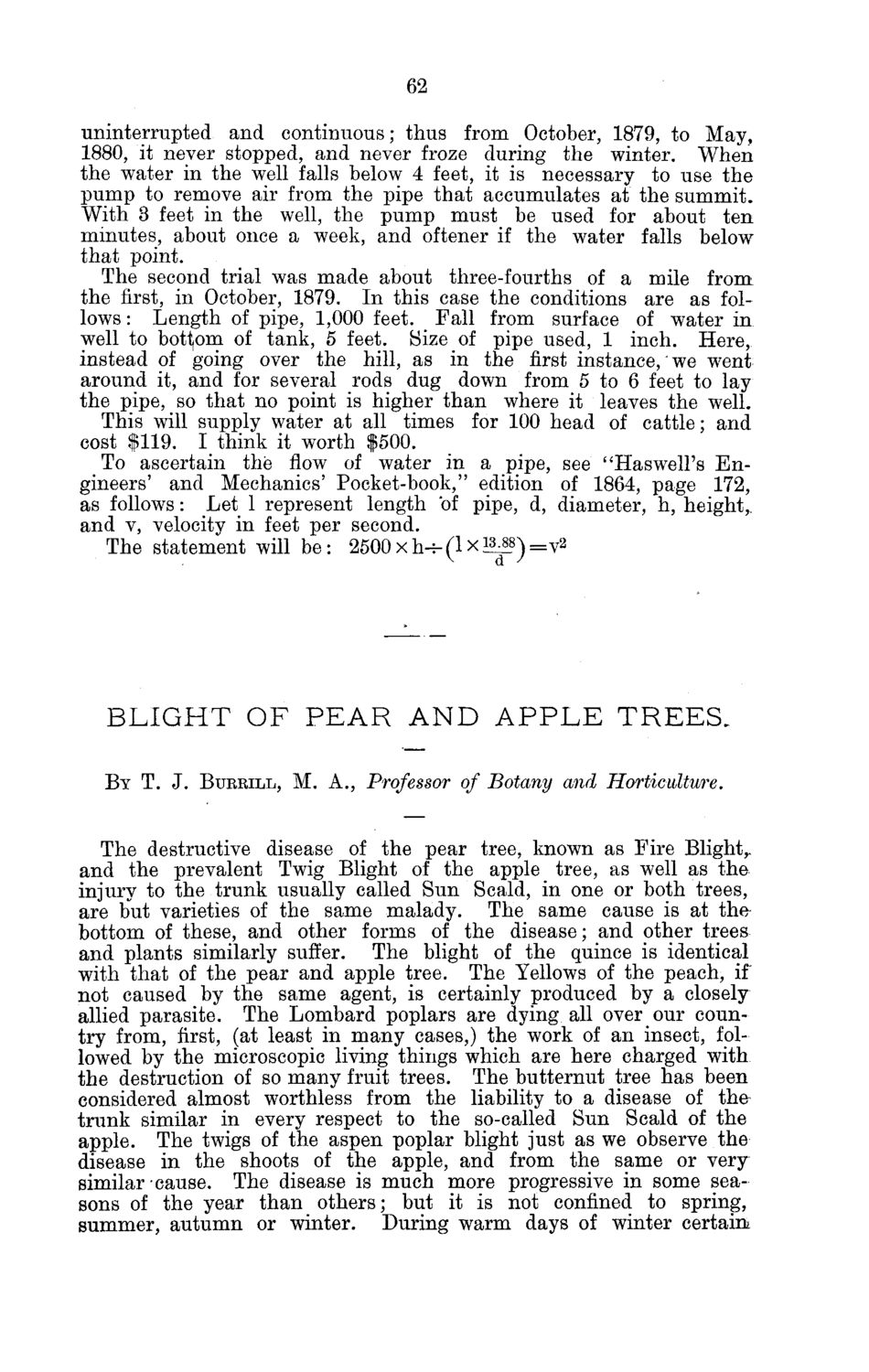| |
| |
Caption: Board of Trustees Minutes - 1880
This is a reduced-resolution page image for fast online browsing.

EXTRACTED TEXT FROM PAGE:
62 uninterrupted and continuous; thus from October, 1879, to May, 1880, it never stopped, and never froze during the winter. When the water in the well falls below 4 feet, it is necessary to use the pump to remove air from the pipe that accumulates at the summit. With 3 feet in the well, the pump must be used for about ten minutes, about once a week, and oftener if the water falls below that point. The second trial was made about three-fourths of a mile from the first, in October, 1879. In this case the conditions are as follows : Length of pipe, 1,000 feet. Fall from surface of water in well to bottom of tank, 5 feet. Size of pipe used, 1 inch. Here, instead of going over the hill, as in the first instance, we went around it, and for several rods dug down from 5 to 6 feet to lay the pipe, so that no point is higher than where it leaves the well. This will supply water at all times for 100 head of cattle; and cost $119. I think it worth $500. To ascertain the flow of water in a pipe, see "Haswell's Engineers' and Mechanics' Pocket-book," edition of 1864, page 172, as follows: Let 1 represent length of pipe, d, diameter, h, height,, and v, velocity in feet per second. The statement will be: 2500xh-r-(lx3^88)= v2 BLIGHT OF PEAR AND A P P L E TREES. BY T. J. BURRILL, M. A., Professor of Botany and Horticulture. The destructive disease of the pear tree, known as Fire Blight,, and the prevalent Twig Blight of the apple tree, as well as the injury to the trunk usually called Sun Scald, in one or both trees, are but varieties of the same malady. The same cause is at thebottom of these, and other forms of the disease; and other trees and plants similarly suffer. The blight of the quince is identical with that of the pear and apple tree. The Yellows of the peach, if not caused by the same agent, is certainly produced by a closely allied parasite. The Lombard poplars are dying all over our country from, first, (at least in many cases,) the work of an insect, followed by the microscopic living things which are here charged with the destruction of so many fruit trees. The butternut tree has been considered almost worthless from the liability to a disease of the trunk similar in every respect to the so-called Sun Scald of the apple. The twigs of the aspen poplar blight just as we observe the disease in the shoots of the apple, and from the same or very similar cause. The disease is much more progressive in some seasons of the year than others; but it is not confined to spring, summer, autumn or winter. During warm days of winter certain!
| |